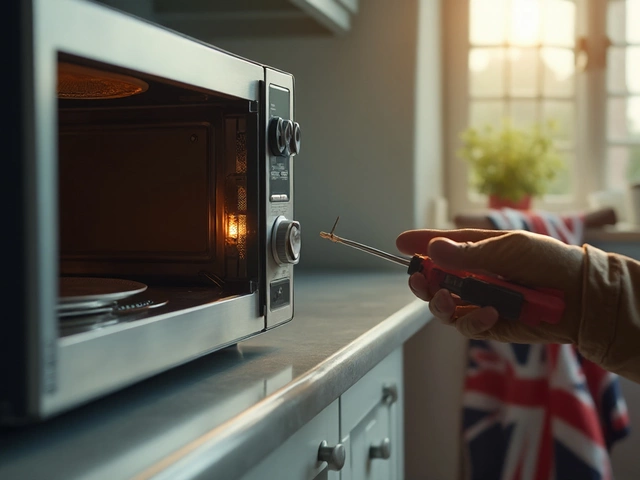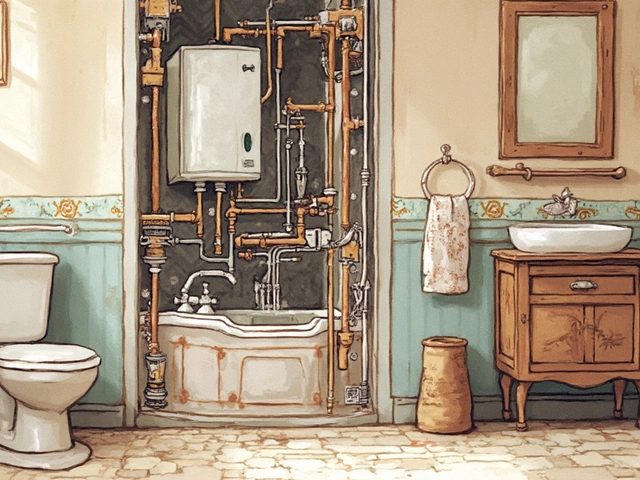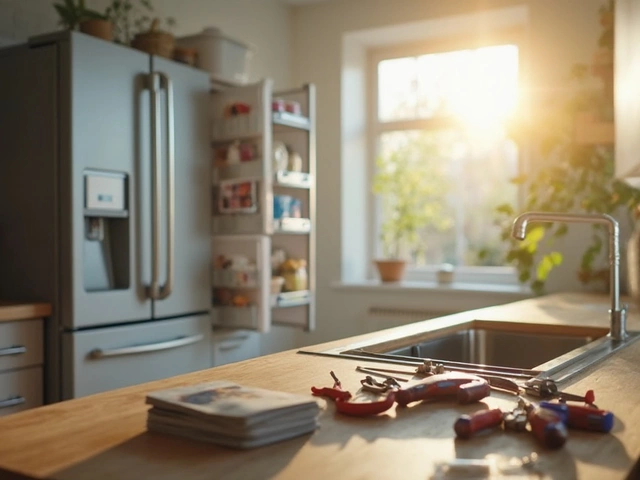Waking up to a cold shower is the worst way to start the day. Before you call a plumber, there are a few easy checks you can do yourself. Most no‑hot‑water problems are caused by something simple – a tripped breaker, a reset button, or a stuck thermostat. This guide walks you through the most common culprits and gives you step‑by‑step fixes you can try right now.
First, make sure the power or gas supply is actually on. For electric water heaters, look at your home’s breaker panel; a tripped switch will often reset with a firm flip. If you have a gas‑fired boiler, listen for the pilot light – a faint hissing sound or no flame means the system isn’t igniting. Also, verify that the thermostat is set to a warm enough temperature; many models default to 120°F (49°C). A quick adjustment can instantly bring back hot water.
If the basics check out, move on to a few hands‑on tricks. For electric tanks, locate the reset button on the thermostat (usually red) and press it – this often clears an over‑heat shutdown. For a boiler, bleed any air trapped in the radiators; a simple valve at the top of each unit releases the trapped air and restores proper flow. Next, inspect the dip tube inside the tank; a broken dip tube mixes cold water with hot water, giving you lukewarm results. Replacing it costs under £30 and is a straightforward job with a screwdriver and bucket.
Another common issue is a clogged inlet filter. Over time, sediment builds up and reduces water flow, making the heater work harder and sometimes shutting off. Turn off the cold‑water supply, unscrew the inlet nut, and clean the screen with a brush. Reassemble and restore the water flow – you’ll notice hotter water faster. Finally, check for any visible leaks around the heater or boiler; even a small drip can drop pressure and prevent the system from igniting.
If none of these steps restore hot water, it’s time to think bigger. A water heater that’s over ten years old often loses efficiency, and the heating element may be failing. For boilers, a faulty pump or a broken pressure valve can cause repeated shut‑offs. These parts usually require a professional’s tools and certification, especially when dealing with gas. Don’t risk safety – call a qualified engineer to diagnose and replace the component.
In the meantime, you can get temporary hot water by heating a kettle or using a portable electric heater. It’s not a long‑term fix, but it buys you time while you arrange a service visit. Remember, regular maintenance – flushing the tank once a year and checking the pressure gauge – can stop most no‑hot‑water surprises before they happen.

When your boiler breaks down, taking a comfortable shower suddenly feels like a luxury. This article explains exactly what happens to your shower when a boiler goes out, ways to still get clean, and when you should call in a professional. Learn alternative methods for washing, bust some myths about cold showers, and get tips on preventing future breakdowns. We even cover what to do if you have kids or need to keep up with fitness routines. Staying clean during a crisis isn’t impossible—you just need a bit of know-how and some creative solutions.

Learn fast how to spot a blown microwave fuse, test it safely, and replace it yourself. Step‑by‑step instructions, tools needed, and common pitfalls covered.

A failing water heater element can leave you in the chilly lurch just when you need a warm shower. Learn how to diagnose the problem with simple, straightforward steps. This guide covers common symptoms, testing methods, and practical tips for handling a faulty element. We'll explain what's involved and offer insights for DIY repair or knowing when to call a professional.

Most extractor fans can be repaired with simple fixes like cleaning, capacitor replacement, or tightening parts. Learn when DIY works and when to call a pro to avoid costly damage from damp and mold.

Discover what makes some refrigerator repairs more costly than others. From compressor issues to electronic faults, fixing these problems can hit your wallet hard. We'll uncover why some are pricier than others and offer tips on how to avoid them. Learn about preventive measures to save you money in the long run. This guide is a must-read for every fridge owner looking to keep repair costs at bay.

When it comes to microwaves, understanding their lifespan is crucial for homeowners looking to make informed decisions about maintenance and replacement. This article delves into the essential factors that affect the longevity of microwaves, offering practical tips on extending their lifespan and recognizing when it's time for a new one. You'll learn about common signs of wear and tear, the importance of proper usage, and how regular servicing can enhance performance. Discover how to keep your microwave running efficiently and what to do when repairs are inevitable.